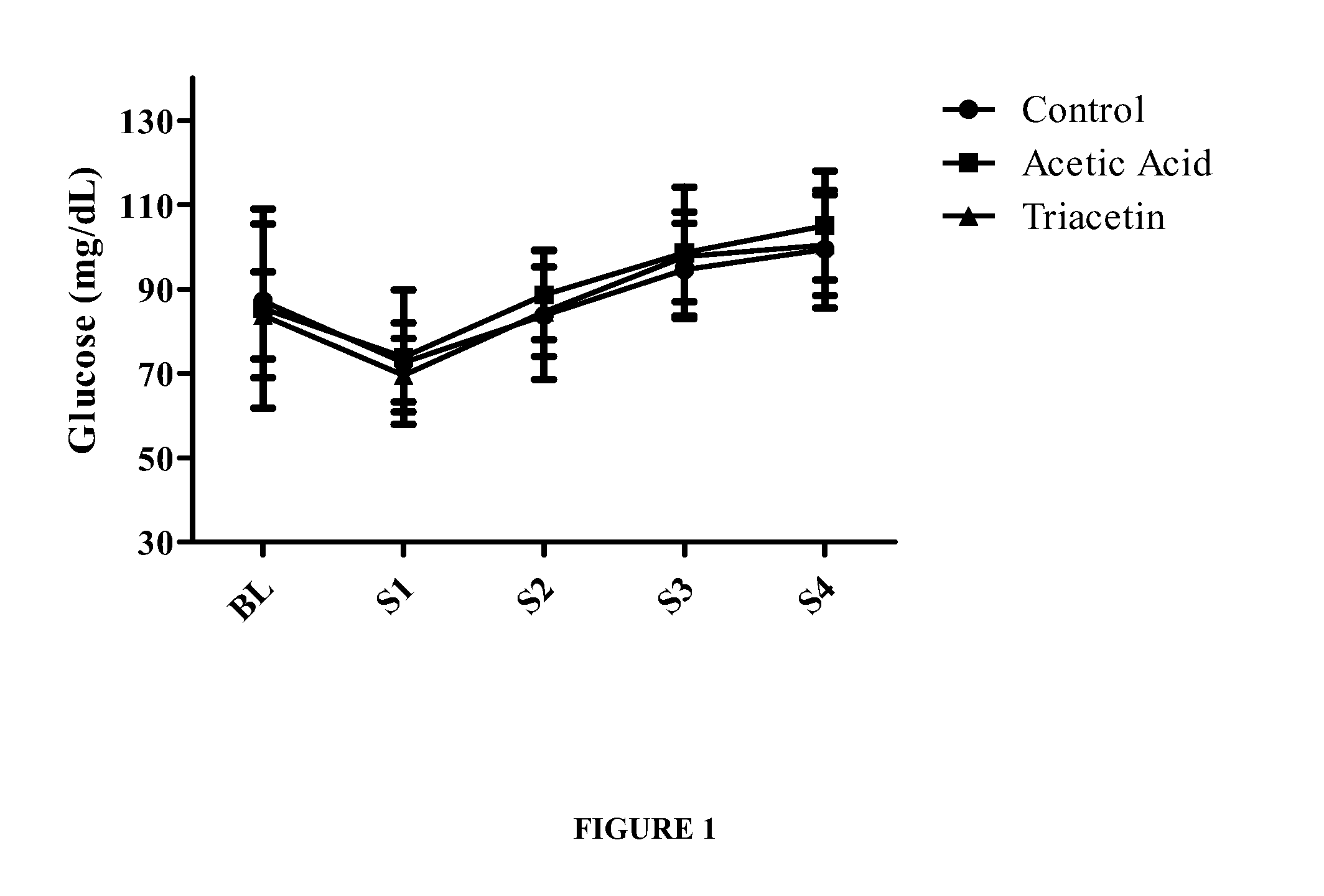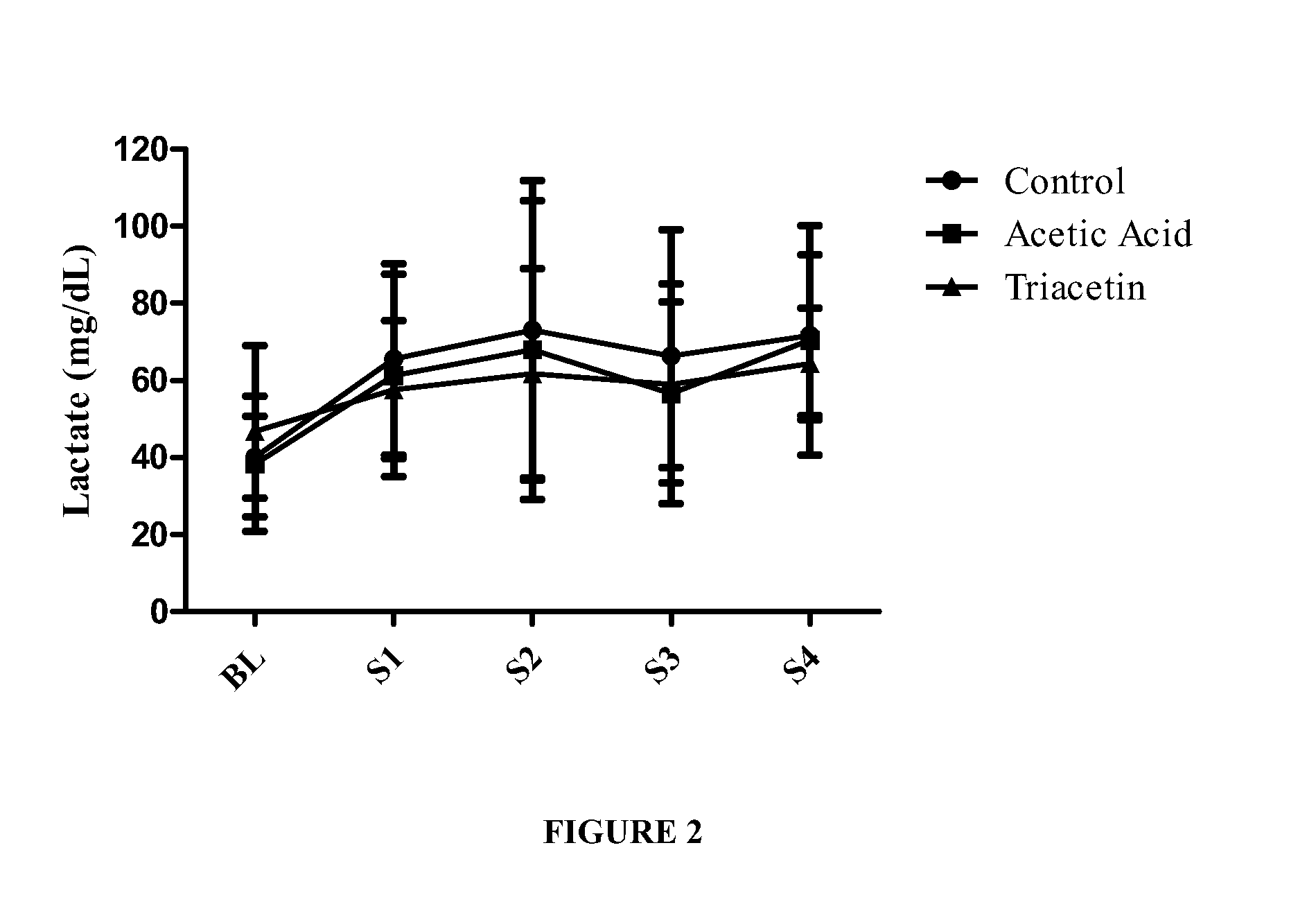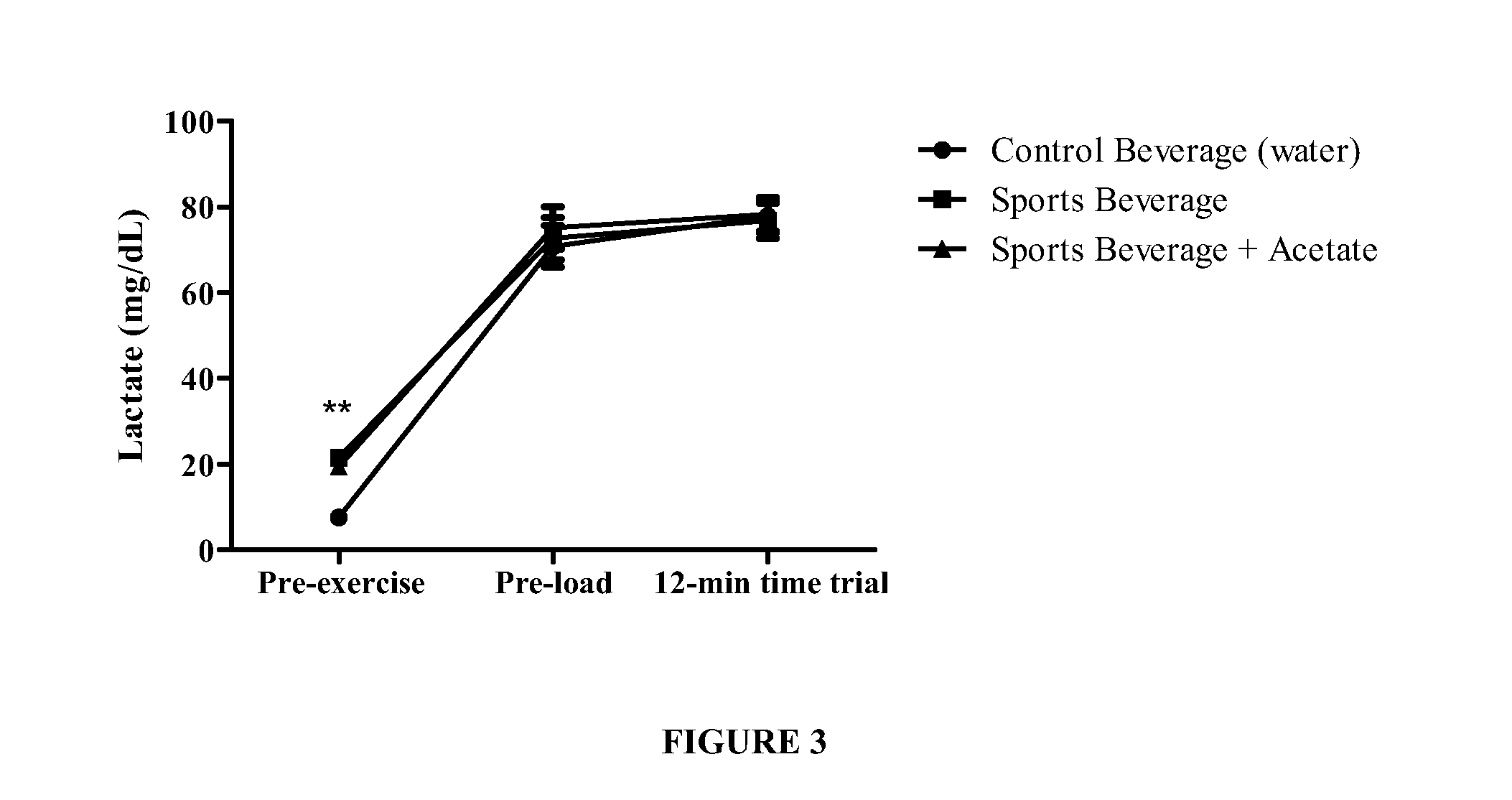Performance enhancing sports beverage and methods of use
a sports beverage and performance technology, applied in the field of performance enhancement sports drinks, can solve the problems of increasing the risk of gastrointestinal disturbance in athletes consuming more than 30 grams of these lipids, increasing the risk of gastrointestinal disturbance, and consuming lcts before and during exercise, so as to improve athletic performance, reduce perceived exhaustion, and enhance athletic performance
- Summary
- Abstract
- Description
- Claims
- Application Information
AI Technical Summary
Benefits of technology
Problems solved by technology
Method used
Image
Examples
example 1
Sports Beverage Compositions
[0056]Test Beverage A. Test Beverage A contained the following ingredients: water, citric acid, acetic acid (0.54 g acetate per 16 fl. Oz.), natural flavors, sodium chloride, sodium citrate, potassium citrate, potassium chloride, potassium phosphate, sucrose (6 wt %), niacinamide (vitamin B3), pyridoxine hydrochloride (vitamin B6), and cyanocobalamin (vitamin B12). Test Beverage A has a total sodium content of 225 mg / L.
[0057]Test Beverage B. Test Beverage B contained the following ingredients: water, citric acid, triacetin (0.54 g acetate per 16 fl. Oz.), natural flavors, sodium chloride, sodium citrate, potassium citrate, potassium chloride, potassium phosphate, sucrose (6 wt %), niacinamide (vitamin B3), pyridoxine hydrochloride (vitamin B6), and cyanocobalamin (vitamin B12). Test Beverage B has a total sodium content of 225 mg / L.
[0058]Control Beverage. Powerade® (The Coca-Cola Company, Atlanta, Ga.), which contained the following ingredients: water, ci...
example 2
Sports Beverage Compositions and Performance Analysis
[0069]In an additional, non-limiting example of one embodiment of the present invention, male cyclists (n=11; 24.3±0.6 years; VO2MAX of 54.9±2.7 ml / kg / min) consumed isocaloric sports beverages containing citric acid (placebo), triacetin (TRI), or acetic acid (AA) in a double-blind, randomized, controlled crossover study. Subjects consumed 710 mL beverage and a standard breakfast beginning each test day AND performed two 30 second Wingate cycle tests separated by 4 minutes and consumed 7.5 ml / kg beverage while resting during a 60-min recovery period. Subjects then cycled for three 15-min consecutive segments at 65% VO2MAX, followed by a 15 minute simulated “time trial.” Three ml / kg beverage was consumed during the endurance cycle test. Plasma glucose and lactate; serum free fatty acids, sodium, potassium, chloride, bicarbonate, osmolality; whole blood pH, urine osmolality and specific gravity were obtained at times throughout the d...
PUM
 Login to View More
Login to View More Abstract
Description
Claims
Application Information
 Login to View More
Login to View More - R&D
- Intellectual Property
- Life Sciences
- Materials
- Tech Scout
- Unparalleled Data Quality
- Higher Quality Content
- 60% Fewer Hallucinations
Browse by: Latest US Patents, China's latest patents, Technical Efficacy Thesaurus, Application Domain, Technology Topic, Popular Technical Reports.
© 2025 PatSnap. All rights reserved.Legal|Privacy policy|Modern Slavery Act Transparency Statement|Sitemap|About US| Contact US: help@patsnap.com



